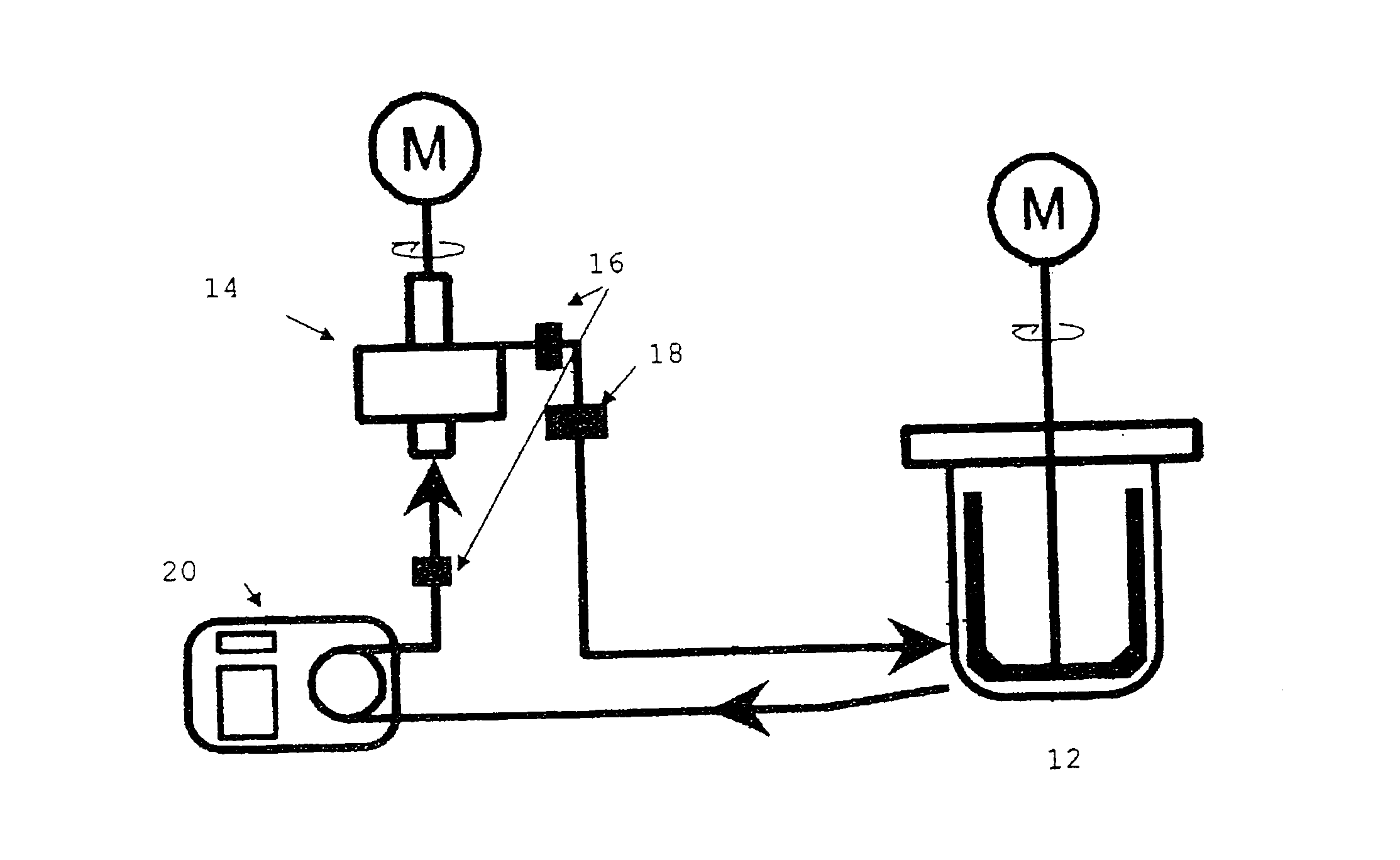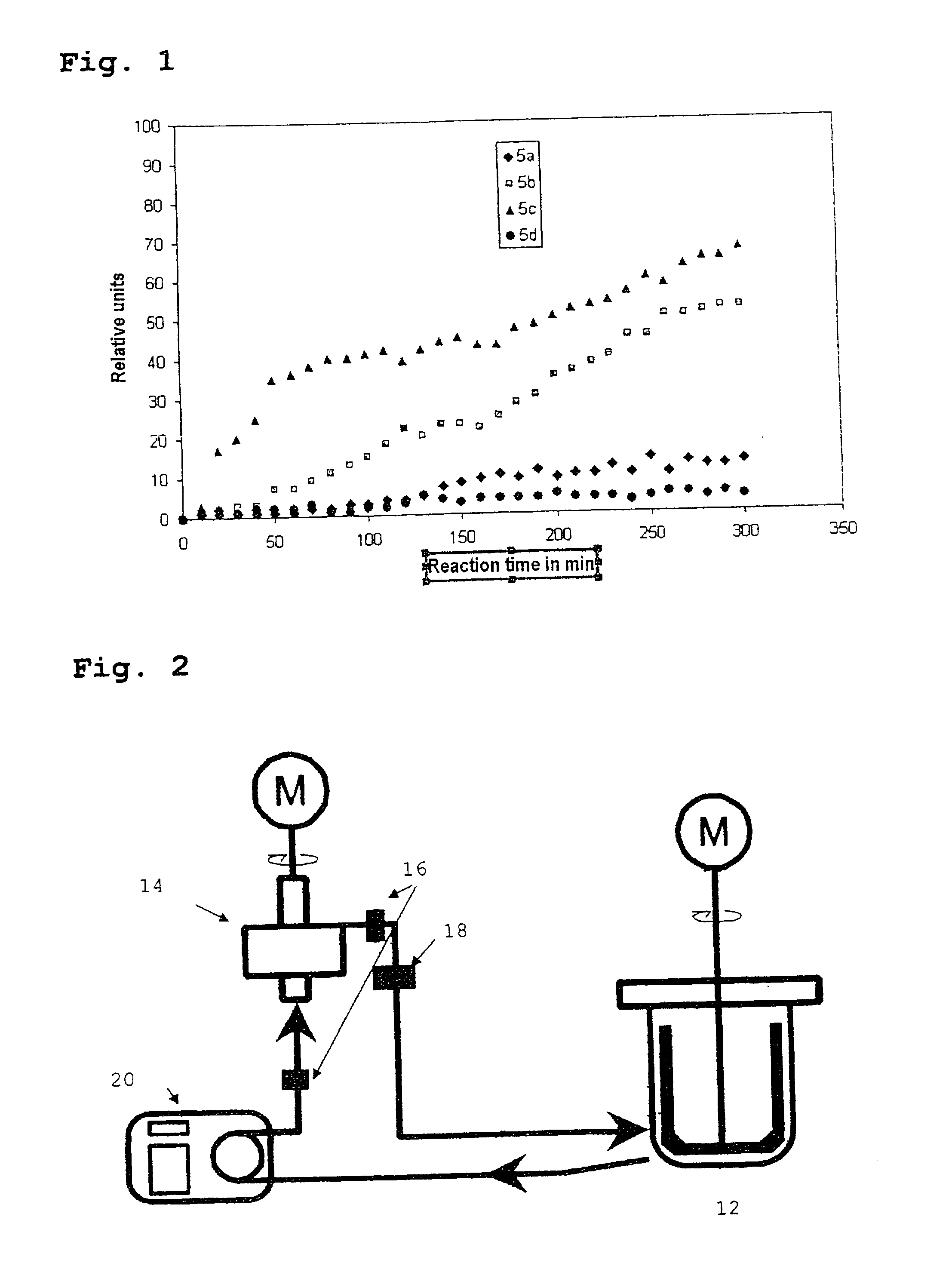Method for producing a polymer
- Summary
- Abstract
- Description
- Claims
- Application Information
AI Technical Summary
Benefits of technology
Problems solved by technology
Method used
Image
Examples
example 1a
[0072]A mixture of 5.5 kg of water, 0.52 kg of emulsifier 1 and 125 g of itaconic acid is initially taken under nitrogen in a 40 l reactor equipped with an MIG stirrer and is heated to 95° C. after addition of 5% of feed 1 at 140 rpm. After addition of 0.60 kg of a 5% strength solution of sodium peroxodisulfate, the remainder of feed 1 is metered in after 10 min and, simultaneously therewith, a solution of 2.25 kg of a 4.4% strength sodium peroxodisulfate solution is metered in in 4 h. After a further 2 h at 90° C., treatment is effected with a solution of 0.9 kg of a 2% strength solution of tert-butyl hydroperoxide and 0.95 kg of a dilute, aqueous solution of 66 g of sodium hydrogen sulfite (40% strength) and 5 g of acetone in 2 h and thereafter cooling to 50° C. is effected and a pH of about 5.5 is slowly established with sodium hydroxide solution. After addition of customary amounts of antifoam and bactericide, unconverted monomer is removed with steam over the course of 5 h. A 4...
examples 1b-e
[0074]Example 1a was reproduced and the speed during the reaction was changed according to the following data:
b) stirring for 180 min at 90 rpm, 180 min at 140 rpm
c) stirring for 15 min at 90 rpm, 345 min at 140 rpm
d) stirring for 15 min at 140 rpm, 345 min at 90 rpm
e) permanent speed change between 140 and 90 rpm (in each case 10 min decrease then 10 min increase)
example 1f
[0075]The coagulum contents of the products 1a-e produced are summarized in the following table. The tendency to foam formation during the reaction as well as in the finished product did not differ. The physical data of the products do not differ in the accuracy of the measurement from those of example 1a.
[0076]The coagulum values (cf. tab. 1) were obtained by sieve fractionation over a 4-fold screen by diluting 1.0 kg of dispersion with 1.0 kg of water and allowing it to run through the filter combination for 1 min. After drying (120° C.), the proportion of coagulum was determined gravirnetrically.
TABLE 1Coagulum contents in mg / kg dispersionScreenABCDE25 μm3605849615545 μm71629654485 μm118132515125 μm 5928124624Total437110103197138
[0077]It was found that the coagulum formation can be effectively reduced by reducing the stirrer speed in the first quarter hour of the reaction. The first 15 min are the critical time window for this product with regard to coagulum formation.
PUM
| Property | Measurement | Unit |
|---|---|---|
| Viscosity | aaaaa | aaaaa |
| Particle size | aaaaa | aaaaa |
| Distribution | aaaaa | aaaaa |
Abstract
Description
Claims
Application Information
 Login to View More
Login to View More - Generate Ideas
- Intellectual Property
- Life Sciences
- Materials
- Tech Scout
- Unparalleled Data Quality
- Higher Quality Content
- 60% Fewer Hallucinations
Browse by: Latest US Patents, China's latest patents, Technical Efficacy Thesaurus, Application Domain, Technology Topic, Popular Technical Reports.
© 2025 PatSnap. All rights reserved.Legal|Privacy policy|Modern Slavery Act Transparency Statement|Sitemap|About US| Contact US: help@patsnap.com


